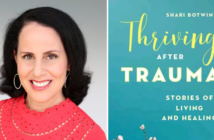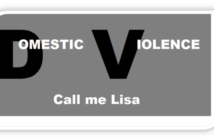October 27, 2010
Ines Rivera
Investigative Reporter
Living the Life
When thinking of a homeless person, one often conjures up the stereotype of an unkempt man or woman, weighed down by coats, perhaps bags, as they beg for change while holding up a sign or raising a cup. This image is often unrepresentative of most homeless people, and could not be further from the truth in the Washington DC metro area.
“I have a Bachelor of Arts in accounting, Bachelors in Science degree in banking and finance. I worked for Merrill Lynch for fifteen years, down on Wall Street, 230 Broadway. I left Merrill Lynch and went to Young and Rubicam, one of the largest advertising firms in New York City, and that’s where I got laid off,” says Sebastian Porte who is fifty-three years old. After taking a huge pay cut, Porte recently secured a job in Washington DC, yet he is homeless and currently lives at the Central Union Mission.
Central Union Mission, a nonprofit, is the oldest social service agency in the District of Columbia. Operating an emergency shelter for homeless men, the facility provides an 18-month rehabilitation program, a free meals program, a clothing and furniture distribution center and a retreat center.
“Once I got laid off, it seemed that’s when we had the financial meltdown. None of the banks were hiring — none of the mortgage companies, the broker companies.” Porte, originally a New York resident, then faced the foreclosure of his home. Confronted by this reality, he began looking for employment in other states. After attending a job fair at the Jacob Javits Center, he was offered a position in Philadelphia, though a starting date was not set.
“After two weeks of orientation, I was told that the position had been taken, transferred internally. But they did have a suitable opening in DC. So, instead of going back to New York jobless, I decided to keep going. I stayed in Union Station for two days, because I knew no body to call. I had enough money for a hotel, but I couldn’t spend the money. In case I didn’t get the job I would need to get back to New York. I ran into a gentleman that gave me this address and I came here. I found out a week later that I got the job. Now I had the job and no money left.”

Sebastian Porte holds a Bachelors and Masters degree and currently works in finance, despite his homelessness.
Porte now spends practically all of his earnings on his mortgage. “Losing my home would be like losing one of my children. My wife managed to find a job too. My family is in New York. I’m here working and sending every penny to make sure I get out of foreclosure.” Porter also has a twenty-year old son who is attending the University of Connecticut. “His room and board, my mortgage, utilities and everything that comes with the home – for this reason I cannot afford to live anywhere else but this shelter.”
A common misconception is that unemployment has not hit the Washington, DC area as hard as the rest of the country, because the core of government is here. Yet, according to the Washington Legal Clinic for the Homeless, approximately 16,000 individuals are homeless this year, a rate competing with the highest in the country. In fact, on a single night there are 6,539 homeless persons in the District, a 5% increase from 2009.
The National Coalition for the Homeless recently released a report which found that between April of 2008 and April 2009, foreclosures increased by 32%. Homelessness is not a new phenomenon in the metro area, but since the 1980s, it has risen dramatically. Foreclosures, poverty and lack of affordable housing contributed to this increase, but two major factors have been a lack of job opportunity and stagnant incomes.
Homelessness has a new face, one that includes people from all walks of life. Like Porte, Tavon is one of those new faces. Tavon is eighteen years old. He has an air of confidence and even for his age, he’s quite articulate. At sixteen, after conflicts with his family, Tavon left his Delaware home to live on the streets in the District.
Describing his life on the streets as part of the homeless community, he stated: “The most difficult part is figuring out where am I going to sleep, eat, not having healthcare…a job. So you don’t know where the money is going to come from, where the food is coming from. When it’s raining, you have to worry about it being cold; then how am I going to dry my clothes. You worry about snow. If the snow is too high, then you can’t sleep outside; you have to worry about vacant apartments, and a vacant apartment is not always a secure place.”
After two years living on the streets, he is now staying at the Sasha Bruce House, the District’s only short-term shelter for youth that provides: crisis intervention, individual and group family counseling, case management, aftercare counseling and mentoring and temporary respite care.
“I felt like my parents were never there for me. Not having a high school diploma makes it even harder for anybody. Being homeless, not having a job or healthcare, that makes it fifty times harder to do anything you want to do. I had to come to a reality check that this is my life and I have to change it. I can choose to change my whole life for me, for my family, for anybody who feels they’re not going to make it.”
Rarely does Sasha Bruce House take someone Tavon’s age, but with help from a family friend and mentor, he was referred to the shelter and accepted. He is now working towards his GED, trying to receive healthcare and actively searching for a job, though he has not found one.
“I do want to do music as a career, but music doesn’t work out too well for everybody. So, my fallback plan is to be a doctor, a pediatrician. That’s what I see myself doing ten years from now, if not music.”
Although he has a stronger support system now, Tavon admits that it has caused him to distrust people, both friends and the general public. “I don’t trust many people – that comes from childhood. People promising me things and don’t follow through or being lied to a lot.” For now he focuses on his goals and plans to reconnect with his parents. “I don’t want to talk to them, because they’ll knock me off whatever my focus is and that’s to get back to school, get my job and keep it moving. Once I get myself together, then I will go back and try to settle my differences. Even though they are my adoptive parents, they’re still my parents.”
Women, mothers and children have also been facing difficult times recently. Persons in homeless families make up 39% of the total homeless population in the District, a 10% increase since 2009. Virginia is no exception with 43% of the homeless population in the state consisting of individuals in families. Mark Moreau, the deputy director of operations at the Sullivan House — which is part of the Arlington-Alexandria Coalition for the Homeless – asserts, “Our typical client is a woman with two or three children, often working when they come in.”
Sullivan House is a shelter offering long-term housing solutions, finance management and career development. It also has a post-shelter transitional program, Adopt a Family, as well as a youth development program. Moreau states, “We have a staff person and she works with our youth. There’s a tutoring component, a development component. She works closely with parents, if there have behavioral or mental health issues. We have a lot of behavioral issues. A lot of our kids have seen abuse firsthand; their parents might have been abused.”
Many families become homeless due to a lack of affordable housing, but Moreau also highlights: “A lot of our families have worn out their support network. The women might have had children at a young age or even an older age, and the family member or friend cannot deal with the child in the household. So they’ll often be asked to leave.” Sullivan House stresses that a path to self-sufficiency depends largely on earning a living. So they assist clients by identifying employment options, getting them training and education and teaching all aspects of job searching.
The homeless in the Washington, DC metro area share a common need: economic independence. In facing a lack of jobs and affordable housing, it will continue to be an uphill battle for them all. Until the economy corrects itself and move to a more stable footing, the face of homelessness will continue to change and include people of all different ages, races, ethnicities and from all different socioeconomic backgrounds. Many of these individuals are actually employed but just can not make ends meet when faced with daunting issues such foreclosures or cuts in wages.
Tavon asserts: “People should treat homeless people the same way they would want to be treated [with]kindness, respect. Most people look at you different. You’re not different. You’re just going through a rough time.”






1 Comment
Pingback: Reduce America’s Debt Now Act of 2011 (Introduced in House – IH)H. R. 2411The Government Want to Tax the Average American Worker and Pay off The National Debt By adding A new Tax. | WVNM FM 92.2